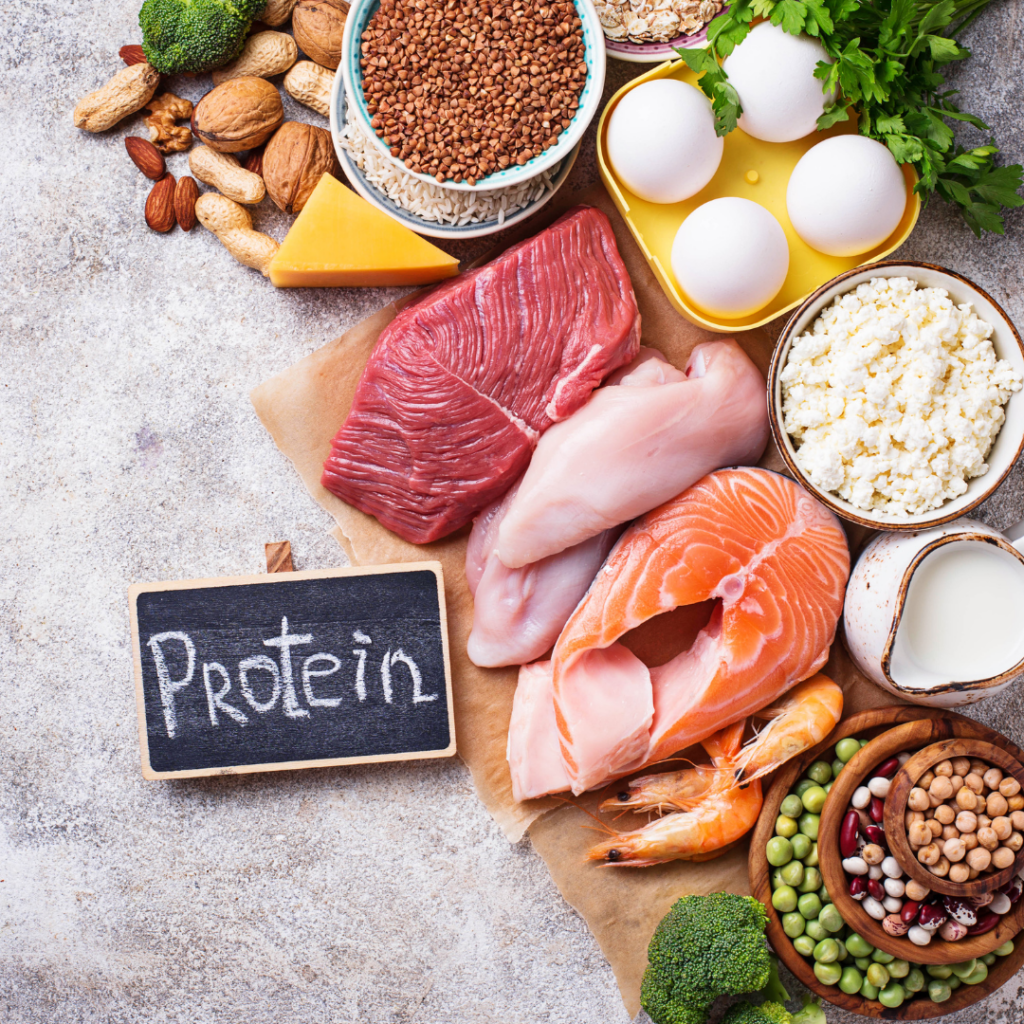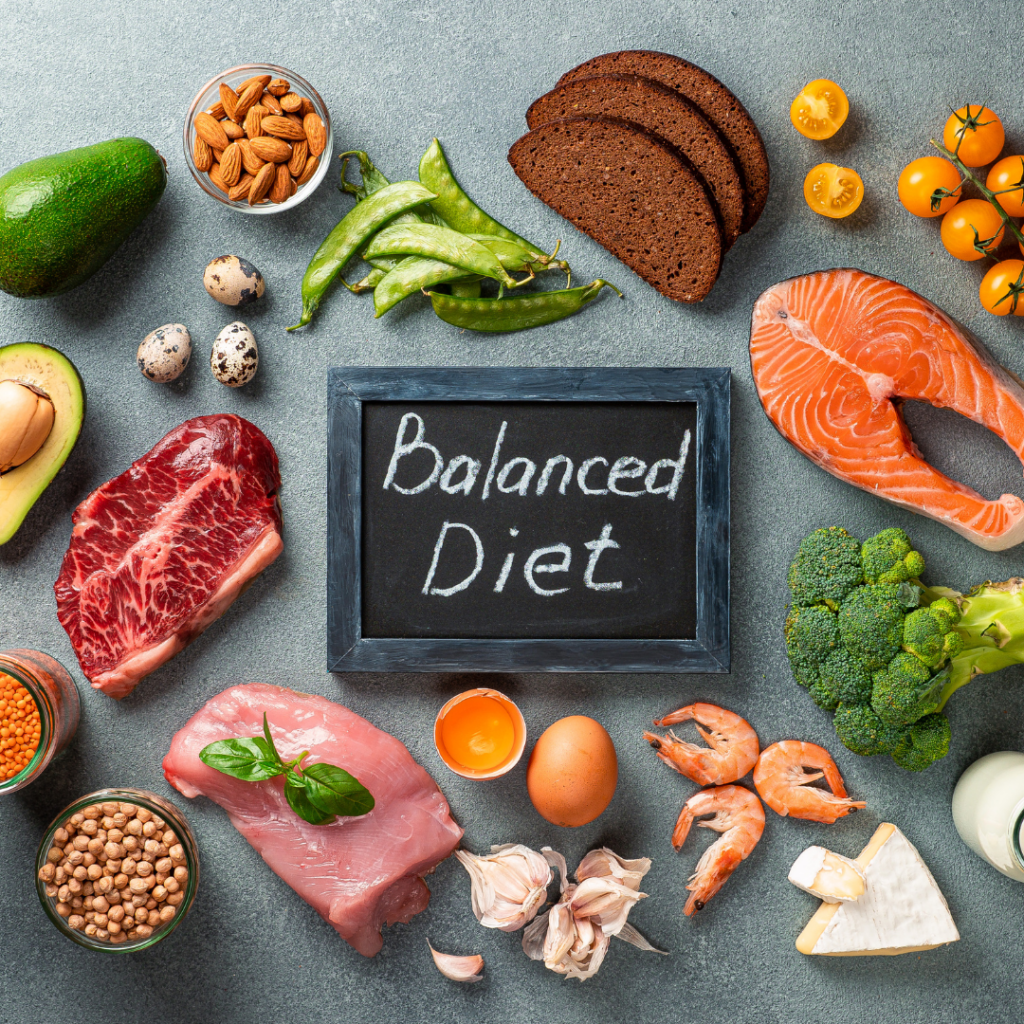Balanced Nutrition 101: The Basics of Macronutrients (Pt 1)
Each person is unique, and so is their body! Balanced nutrition means listening to your body and eating a variety of nutrient-rich foods to improve health and well-being. It’s about giving your body the essential nutrients it needs for energy and proper function while focusing on moderation particularly with refined sugars, saturated fats, and salt, to reduce health risks like diabetes, obesity, and high cholesterol. Nutrition isn’t just about fueling your body; it’s about making choices that support your long-term well-being and longevity.
While everyone has an opinion on what the “perfect” diet looks like, there’s no one-size-fits-all approach. The secret is finding the right balance for you. Your body is unique, and the best nutrition plan is one that’s tailored to your needs, helping you thrive both now and in the future. Nutrition is made up of three essential components, macronutrients, micronutrients, and hydration, which all work together to keep your body running smoothly. These elements support everything from immune function to digestive health and organ performance.
Breaking Down the 3 Key Macronutrients
To start on the path to balanced nutrition, it’s crucial to understand your macronutrient needs, as these are required in larger amounts to fuel your body properly. Together, these macronutrients should make up 100% of your daily caloric intake. And while alcohol is often thought to be the “fourth macronutrient,” it’s important to note that it’s not a recommended source of energy and should be consumed in moderation, if at all.
Carbohydrates, or Carbs:

These should make up 45-65% of your daily calorie intake and serve as the primary energy source for your body. Without carbs, your muscles and tissues lack the energy necessary to function properly. This includes its role in gut health and immune function, insulin secretion, and the uptake of glucose in cells.
Carbohydrates can be classified into two forms: simple and complex. Simple carbohydrates break down quickly in the body, causing a rapid spike in blood sugar leading to that quick sugar high followed by an inevitable sugar crash. Watch out for added sugars! Unlike naturally occurring sugars, which are found in whole foods, added sugars are introduced during processing to enhance flavor and extend shelf life. It’s recommended to limit added sugars to less than 10% of your daily calorie intake. Simple sugar sources such as donuts, candies, soda, and other sugary beverages, are prime examples of foods high in added sugars. Consuming too much added sugar can lead to diabetes, harm dental health, and contribute to heart health issues.
Refined carbs, a type of simple carbohydrate, are heavily processed and stripped of most of their fiber and nutrients, making them digest quickly and offering little nutritional value. Examples of refined carbs include white bread, pastries, sugary cereals, and white rice. It’s recommended to consume whole grains when possible to reap the full nutritional benefits, as they retain their fiber and essential nutrients, providing more sustained energy and better overall health benefits.
In contrast, complex carbohydrates digest more slowly, offering a steady release of energy and are typically considered healthier due to their higher fiber content. Fiber, a non-digestible type of complex carb, is a true powerhouse, it helps you feel full longer, supports gut health, and even improves cholesterol levels. To stay at your best, it’s important to include plenty of fiber in your daily diet! You can get fiber from plant-based foods like fruits, vegetables, whole grains, and legumes.
Lipids, or Fats:

It is recommended to obtain 20-35% of your daily calories from fats, also known as lipids. Fats are energy-dense and serve as the body’s preferred source of fuel, playing crucial roles in producing sex hormones, maintaining cell structure, regulating body temperature, and aiding in the absorption of fat-soluble vitamins such as D, E, K, and A. They also enhance the taste and texture of foods.
Dietary lipids can be classified into triglycerides, phospholipids, sterols, glycolipids, and fatty acids, each serving distinct functions in the body. These include cholesterol production for sex hormone synthesis, maintaining cell membrane integrity, and supporting the protection of nerve sheaths, which are essential for proper nerve function and communication.
The most common form of fat in our meals is triglycerides, which are broken down into glycerol and fatty acid components. In nutrition, fatty acids are the types of fats most frequently discussed, and they exist in two main forms: saturated and unsaturated. Saturated fats, commonly found in animal products and solid at room temperature (such as butter or lard), can raise LDL cholesterol levels. When LDL cholesterol builds up, it can contribute to serious health problems, including heart disease. It is recommended to limit saturated fats to less than 10% of your total daily calorie intake to help reduce the risk of negative health outcomes.
On the other hand, unsaturated fats, commonly found from plant sources and liquid at room temperature, can help lower LDL cholesterol and raise HDL cholesterol, which is a more beneficial form of cholesterol. Essential fatty acids, such as omega-3 and omega-6, are types of unsaturated fatty acids that are crucial for our health and must be obtained through food. While both are necessary, omega-3’s are often prioritized due to concerns about the effects of omega-6s. The key difference between them lies in their impact on inflammation: omega-3s have anti-inflammatory properties, while omega-6s can promote inflammation when consumed in excess.
Let’s not forget about trans fats, a type of unsaturated fat that is chemically altered to become solid or semi-solid at room temperature. This process, known as hydrogenation, adds hydrogen to the fat, changing its structure. In the food industry, trans fats are often used to extend shelf life, enhance flavors, and improve texture. Common foods that contain trans fats include baked goods, fried foods, frozen meals, and shortening. However, consuming trans fats is not ideal, as they raise LDL cholesterol, promote inflammation, and contribute to insulin resistance, which can lead to serious health issues. With the rise of chronic conditions such as heart disease, diabetes, and obesity, trans fats could be a contributing factor. It’s important to be mindful of the fats you consume and opt for healthier sources to support long-term health.
Protein:

Proteins should make up about 10-35% of your daily caloric intake. Although they are less efficient for energy compared to carbs and fats, proteins play critical roles in the body’s structural and mechanical functions. These include DNA modulation, enzyme production, hormone regulation, and immune function, all crucial for normal growth and development, particularly during periods of growth.
Proteins are made up of amino acids, which are the building blocks that supply the body with essential elements like nitrogen, sulfur, hydrogen, and carbon. There are 11 nonessential amino acids that the body produces naturally, so we don’t need to get them from food. However, there are 9 essential amino acids that the body cannot produce, and we must obtain them through the foods we eat. Together, these amino acids support your body’s growth, repair, and overall health.
Protein requirements can be influenced by factors such as age, pregnancy, lactation, illness, injury, metabolic stress, low calorie intake, and increased physical activity. In chronic situations, a diet lacking in protein can lead to serious health issues like marasmus and kwashiorkor. Getting enough protein through a balanced diet is crucial for maintaining your health, energy, and long-term vitality.
Finding the Perfect Balance

We know that overeating fats and carbs, especially when they come from non-nutrient-dense sources, is linked to conditions like diabetes, heart disease, weight gain, and other negative health effects. However, while overconsumption of protein hasn’t been shown to directly cause weight gain, it can help improve body composition, particularly when combined with weight or resistance training, rather than a sedentary lifestyle. By focusing on balanced, nutrient-rich foods and practicing mindfulness when eating, you can support a healthier body and reduce the risk of these conditions.
Finding the right balance of macronutrients for your body is all about what works best for you. We all have different needs, so it’s not about cutting out a particular food group, it’s about finding a healthy mix of fats, carbs, and protein that keeps you feeling energized, satisfied, and strong. Whether you’re looking to fuel workouts, manage weight, or just feel your best day-to-day, it’s important to listen to your body and adjust as you go. Finding that balance is a journey, and with the right approach, you’ll be supporting your overall health and wellness in a way that works for your unique lifestyle.
Balanced nutrition is about finding what works best for you.
By understanding how carbs, fats, and proteins fuel your body, you can make choices that support your health and energy every day. It’s not about being perfect, it’s about building sustainable habits that help you feel your best in the long run. If you’re ready to take the next step and figure out what your body truly needs, schedule a consultation with the nutritionist at Tucson Wellness MD. Let’s work together to make nutrition simpler, easier, and more enjoyable for you!
STAY CONNECTED